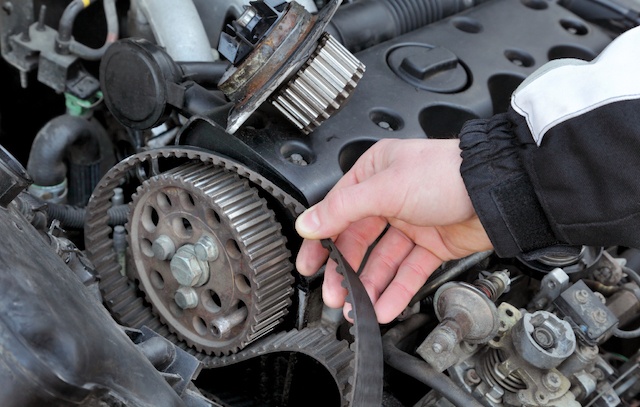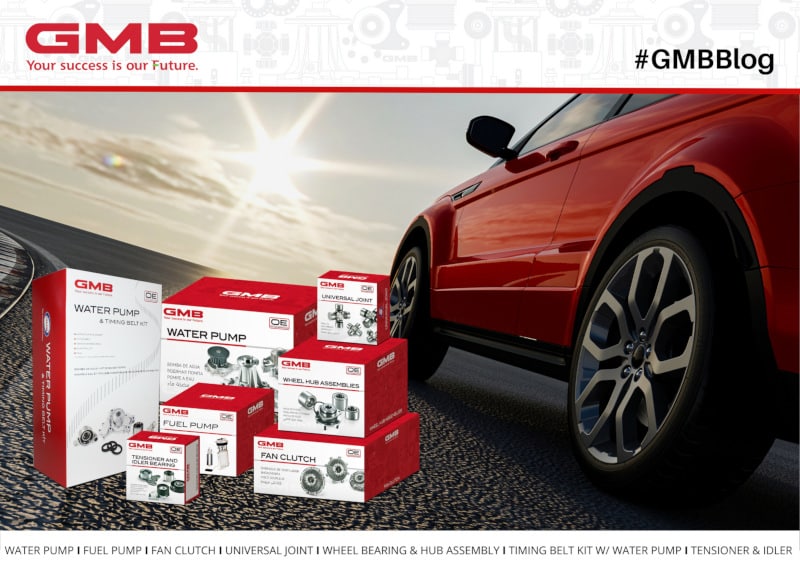5 Things You Need to Know About Water Pumps
The water pump plays an important role in a vehicle’s cooling system. Without a healthy water pump, the engine will overheat. That’s why it’s always important to know a thing or two about water pumps. Below is a list of five facts you need to know about water pumps.
1. Water Pump Failure isn’t Always Obvious

Water pump failure is a silent killer. While there are symptoms, they’re not obvious until it’s too late. Some of the symptoms include a loose water pump pulley, a coolant leak, and rust buildup in the water pump. The average driver doesn’t notice these symptoms until the engine overheats.
Often times, drivers operate their cars daily without knowing that anything is wrong with the water pump, the cooling system, or even the engine. And when the engine finally overheats enough for the driver to notice, the owner starts wondering what is wrong. Even then, the driver likely won’t conclude that the water pump is the culprit.
That’s why it’s important to visually inspect the cooling system during regular maintenance. If you check the water pump pulley, look for leaks, and see if the coolant is still clean, you’ll be able to diagnose a failing water pump before the engine ends up with serious damage.
2. The Bearing is the Heart and Soul of Every Mechanical Water Pump

The bearing inside a water pump plays a big role in the smooth operation of the pump. In fact, a bad bearing leads to a new water pump. But, if the water pump is properly installed and the cooling system is properly maintained, there’s a very good chance the bearing will last the lifetime of the engine. However, if cooling system maintenance isn’t performed, the seal that protects the bearing can go bad. If the seal fails, the bearing itself will go bad. Likewise, if the water pump manufacturer isn’t designing or manufacturing pumps correctly, the bearing can fail prematurely.
To help your customers prevent water pump bearing failure in their cars:
- Install replacement water pumps that are manufactured by a reputable manufacturer
- Talk to your customers about the importance of maintaining their cooling systems (it might help to give them a maintenance schedule or timeline)
3. To Save Time and Trouble, Replace an Ailing Water Pump While Working on Other Related Parts
While water pumps can last a lifetime, it’s prudent to replace them while completing other maintenance. That’s because failures can be incredibly expensive. Not only in terms of the amount of labor it takes to remove and replace the water pump, but also in terms of “collateral damage” that’s risked whenever a pump fails.
A lot of technicians replace the water pump and the timing belt at the same time for the reasons listed here. Water pumps and timing belts are built to last the same amount of time, so once the timing belt goes, the water pump isn’t too far behind (or vice versa).

Even if you’re not replacing the timing belt, it’s always a good idea to take a few minutes to check the water pump whenever you have access to it. It’s astronomically better to catch water pump failure in its infancy and replace the water pump instead of dealing with the aftermath of complete water pump failure. If you need to know the signs of a failing water pump, here’s a list for you.
4. Water Pump Design and Manufacturing is Complex
Water pumps are pretty simple parts. They’re comprised of a few important parts, including a housing, a bearing, a bearing seal, an impeller, an impeller shaft, and a pulley. However, they need to work just right in order to be effective. The water pump has to:
- Flow enough coolant at any given RPM
- Operate reliably for many years
- Operate without making noise or reducing engine efficiency
That’s why design and quality are extremely important when it comes to finding a replacement water pump. At GMB, we design and build some of the best water pumps on the market. In fact, some auto manufacturers contract with us to build their OEM water pumps and other parts for them. When it comes to finding quality replacement water pumps, you can’t go wrong with GMB.
5. Electric Cars Have Water Pumps Too
A lot of people don’t realize that electric cars have water pumps, too. While the water pump in an electric vehicle doesn’t look like a mechanical water pump, it still serves the same function, which is to send coolant through the cooling system.
Electric coolant pumps are complex, just like the water pumps in regular old gas and diesel engines. Whenever you’re servicing an electric vehicle, don’t forget to check the water pump, too!
MORE CONTENT
Stay current!
Sign up here to get the latest news
and updates on all things GMB.
Sign Up To Receive GMB News & Updates!

